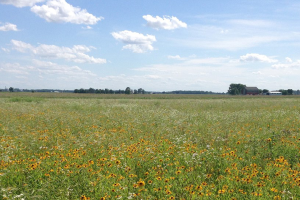Exploring winter wheat canopy architecture for variety-specific management strategies
Michigan State University is evaluating if winter wheat varieties differ in their canopy type and if farmers can take advantage of this trait in managing wheat.
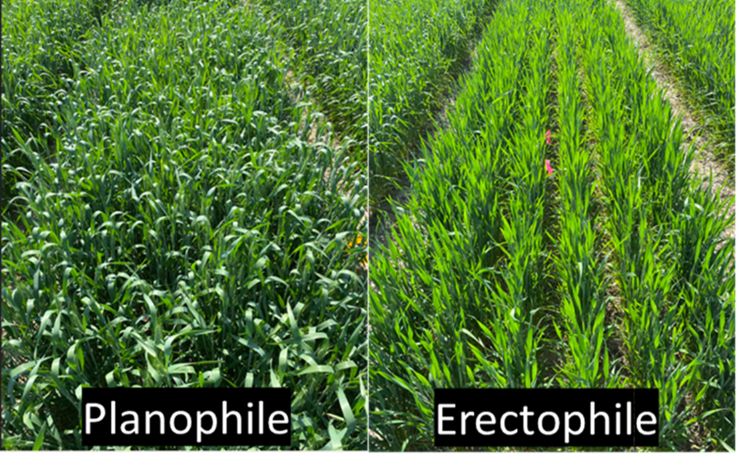
What canopy types are there in the market?
Winter wheat varieties differ in canopy architecture, which affects light interception, light use efficiency and, ultimately, grain yield. The two main canopy types can be described as either planophile (droopy or lateral canopies) or erectophile (more upright canopies) (Figure 1). Michigan State University evaluated various methods to distinguish these canopies including visual ratings, flag leaf angle and tiller angle. Our data showed tiller angle to be the most reliable and consistent method of identifying the differences between these two canopy types.
What is tiller angle and why does it matter?
Tiller angle describes how far stems spread from the vertical axis of the plant.
- Planophile varieties have wider tiller angles, with stems and leaves spreading more horizontally. This creates a fuller canopy, faster closure and greater light interception.
- Erectophile varieties have narrower tiller angles, meaning stems and leaves grow more upright. This allows more sunlight to penetrate deeper into the canopy, which can improve the photosynthetic efficiency of lower leaves.
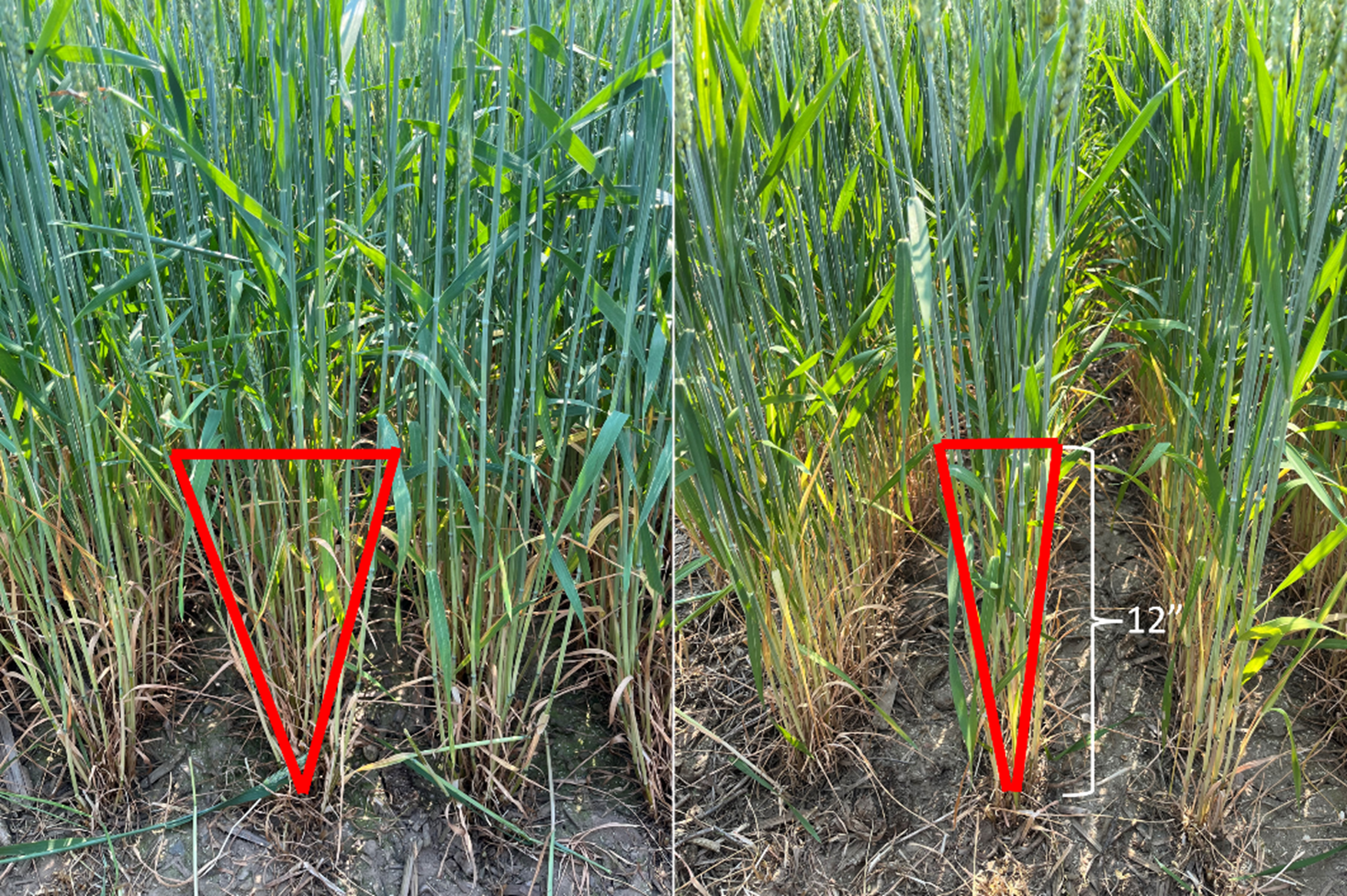
In our study, tiller angle was measured in multiple varieties within each canopy type over 3 years. Planophile varieties consistently showed wider tiller angles than erectophile varieties (Figure 2). Tiller angle in planophiles varieties averaged 23 degrees compared to 18 degrees for erectophiles across planting dates (Figure 3), estimated by measuring the width of canopy 12 inches from the ground. These data confirm that wheat varieties differ in their canopies and tiller angle proved to be a reliable measure of canopy architecture.
Information on variety’s canopy type can still be hard to find. The wheat performance trials report by Michigan State University Extension started including variety canopy type in their report from the 2025 season (see Table 3 in their report).
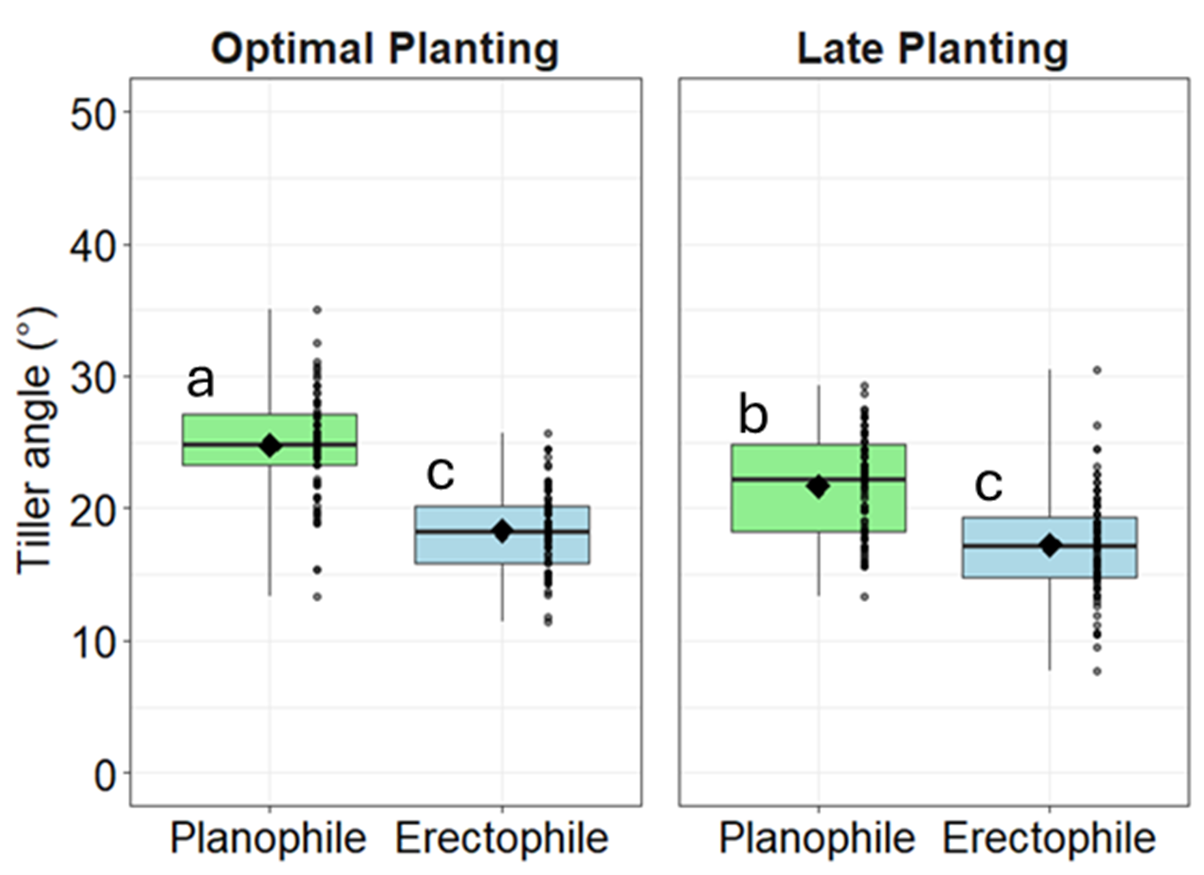
How does canopy architecture influence light interception?
Light interception within the canopy differed strongly between variety types.
- Towards the top of the canopy, no differences in intercepted light levels were observed.
- Deeper in the canopy (Figure 4), planophiles consistently intercepted more light than erectophiles both at 2/3 canopy height (45% versus 35%) and at 1/3 canopy height (77% versus 68%).
- Differences were evident even towards the bottom of canopy, with 92% light interception in planophile compared to 87% in erectophile varieties.
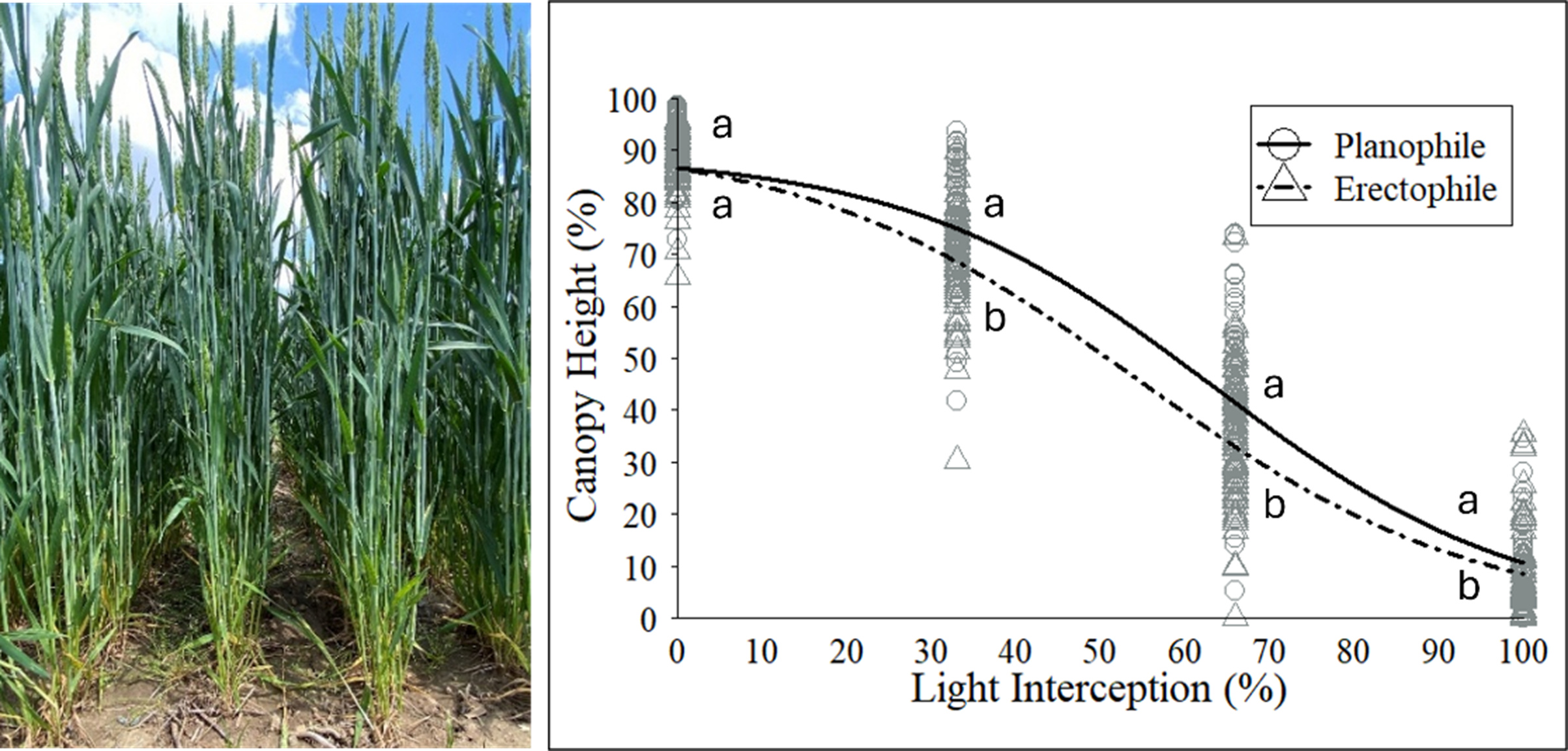
These data shows that planophile varieties are more effective at intercepting light, while erectophiles allow greater amount of light penetration into lower layers that can help improve use efficiency of intercepted light.
How does canopy architecture influence radiation use efficiency?
We observed differences in varietal canopies for their use efficiency of the intercepted light (called radiation use efficiency). Erectophile varieties intercepted less light (as shown in Figure 4) but were able to achieve 7% greater radiation use efficiency compared to planophile varieties across seeding rates. These differences were more evident at lower seeding rates (0.8 million seeds per acre), where erect canopies showed 13% greater radiation use efficiency than planophile varieties (Figure 5).
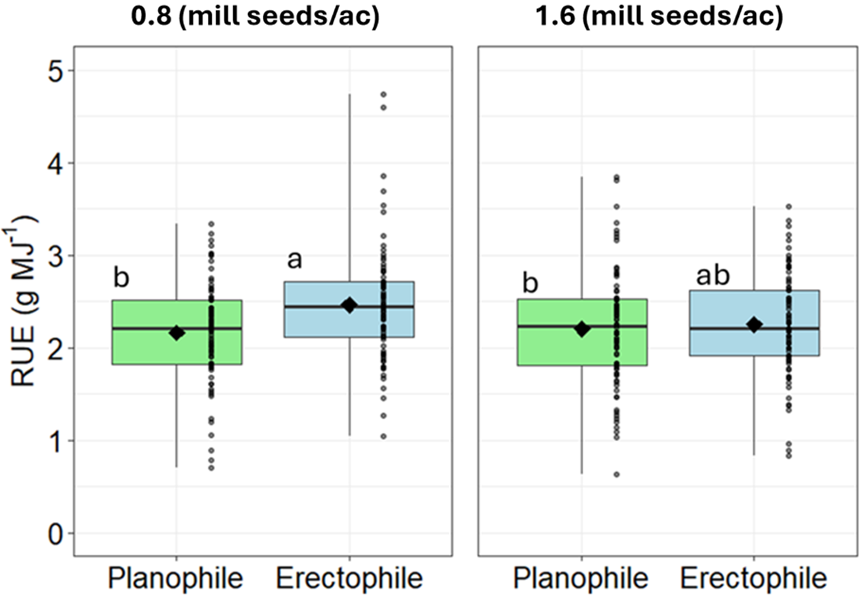
What about yield?
We evaluated these canopy types across various planting dates and seeding rates.
- At optimal planting date, yields of planophile and erectophile varieties were similar (about 103 versus 101 bu ac⁻¹) (Figure 6).
- Under late planting, planophile canopies yielded 97 bu ac⁻¹, significantly higher than erectophiles 88 bu ac⁻¹. This represents a 10% yield advantage for planophiles when planting is delayed.
- Across all treatments, yields were 11% greater under optimal planting date compared to late planting. Seeding rate did not significantly affect yield in this research. These data showed the critical importance of timely planting in wheat and the potential to cut down on seeding rate under timely plantings (1.0-1.2 million seeds per acre).
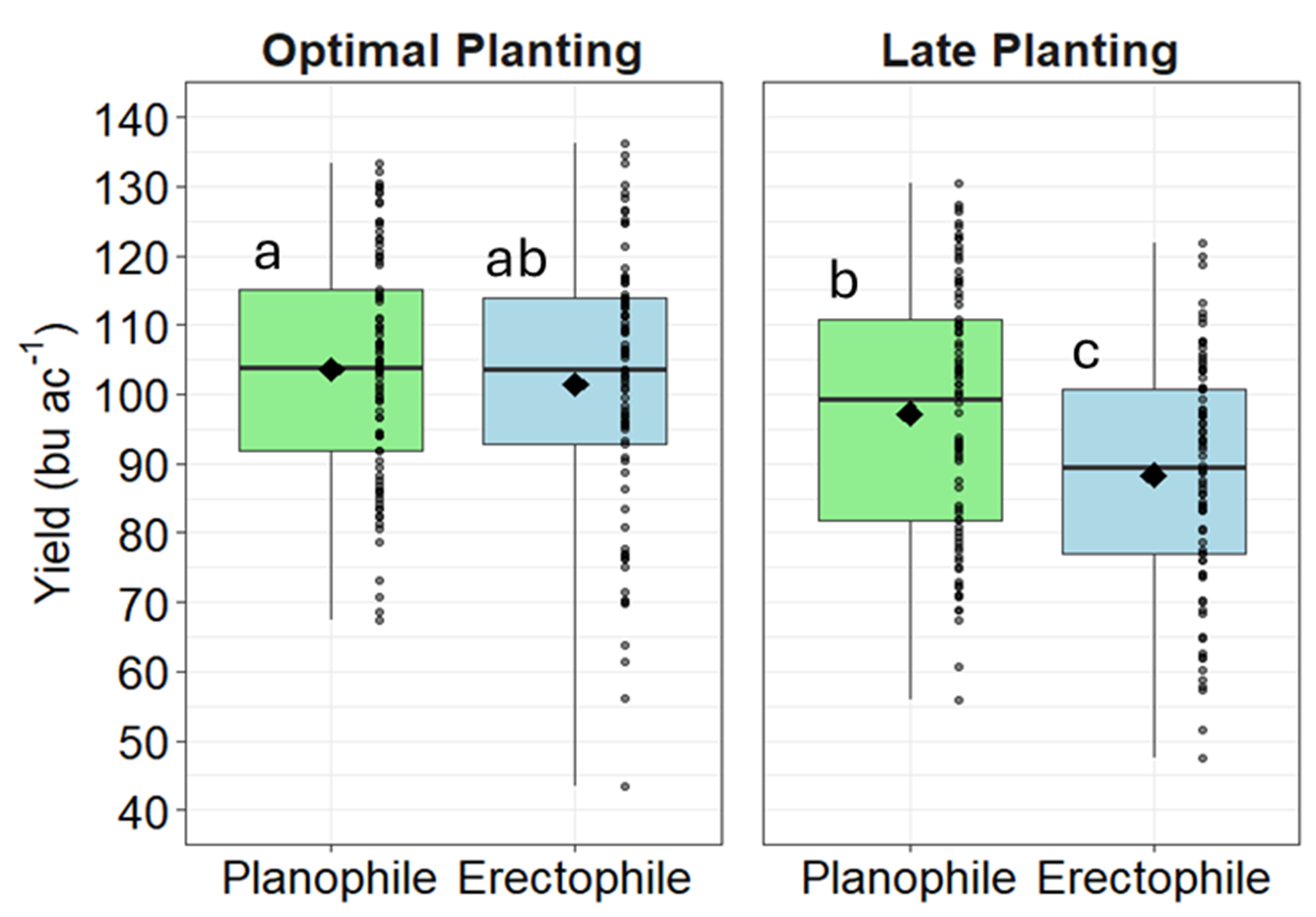
Key findings from our study
- Tiller angle: Planophile varieties consistently had wider tiller angles compared to erectophile, showing difference in wheat variety canopies.
- Light interception: Planophile varieties intercepted significantly more light within the canopy at all depths, leading to greater light interception but lower use efficiency compared to erect varieties.
- Yield: Planophile varieties showed a significant yield advantage (10%) under late planting, while both canopy types had similar yields under timely planting.
- Timely planting is one of the most critical factors in winter wheat production.
Implications for wheat management and future research
- Erectophile varieties are not suited for low yield environments such as late plantings. They may be advantageous in high-yield systems (such as early planting, intensive management), where deeper light penetration helps sustain photosynthesis throughout the canopy.
- Planophile varieties are better suited to lower-yield environments (e.g., late planting, low stands), where rapid canopy closure is needed to capture light and suppress weeds.
More research is needed to fully understand the impact of varietal canopy architecture on wheat management. We are continuing to explore interactions between canopy type and factors such as row spacing, seeding rates, fertility and pest management.



 Print
Print Email
Email